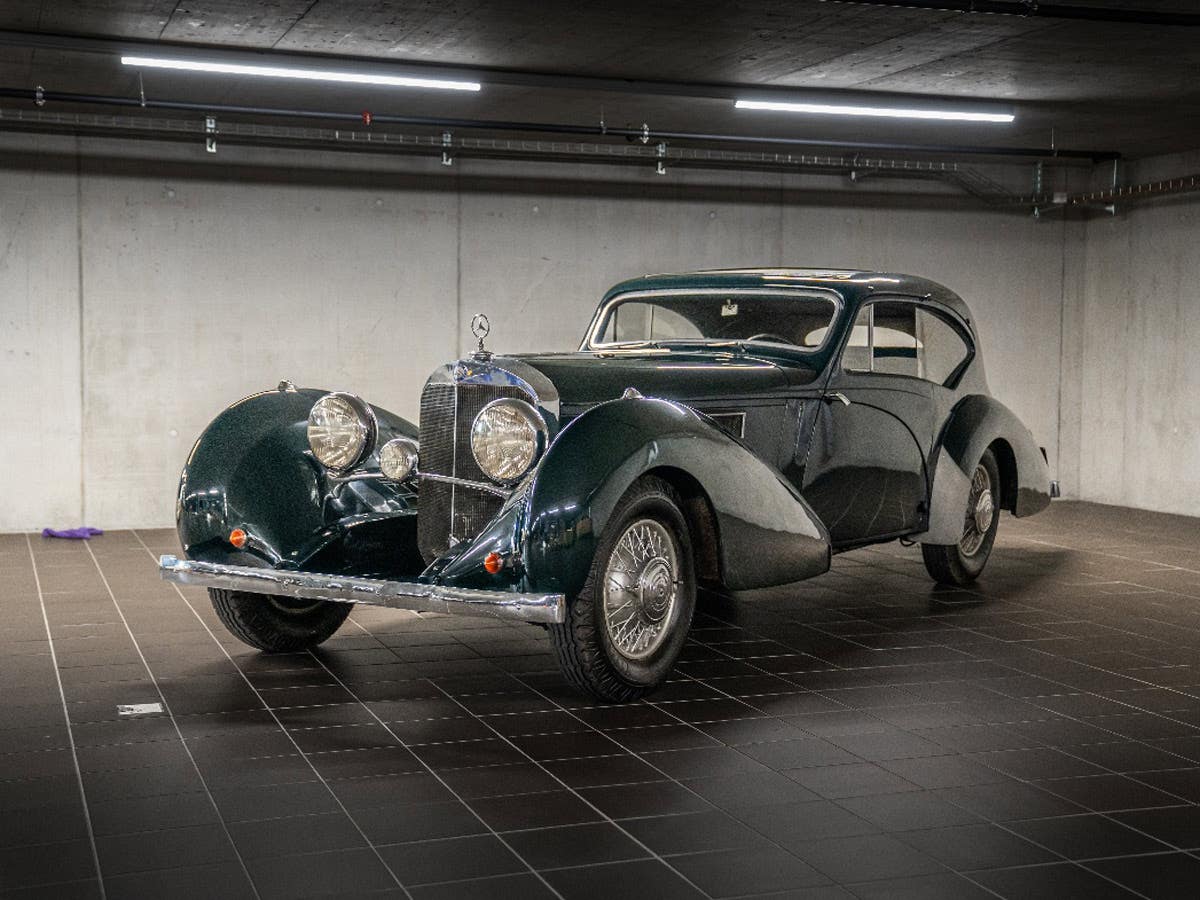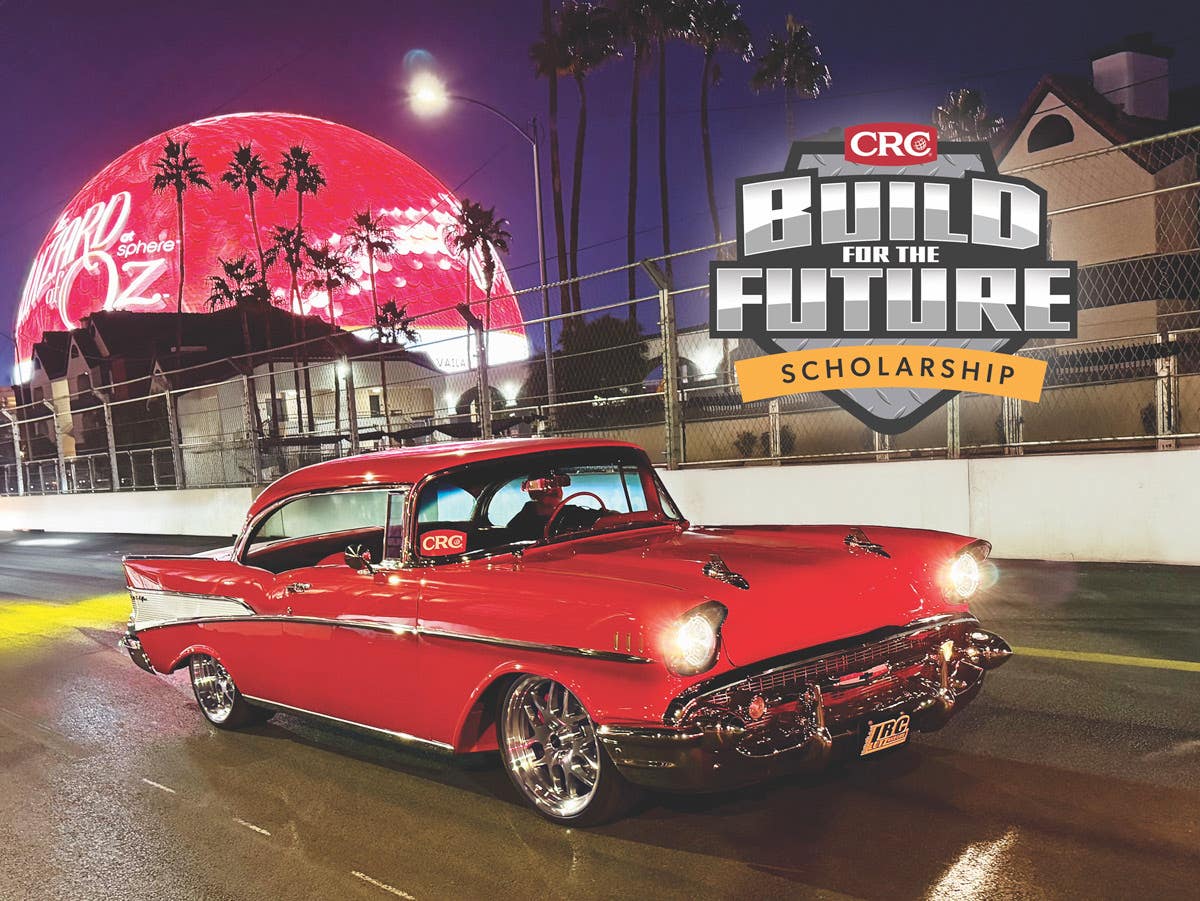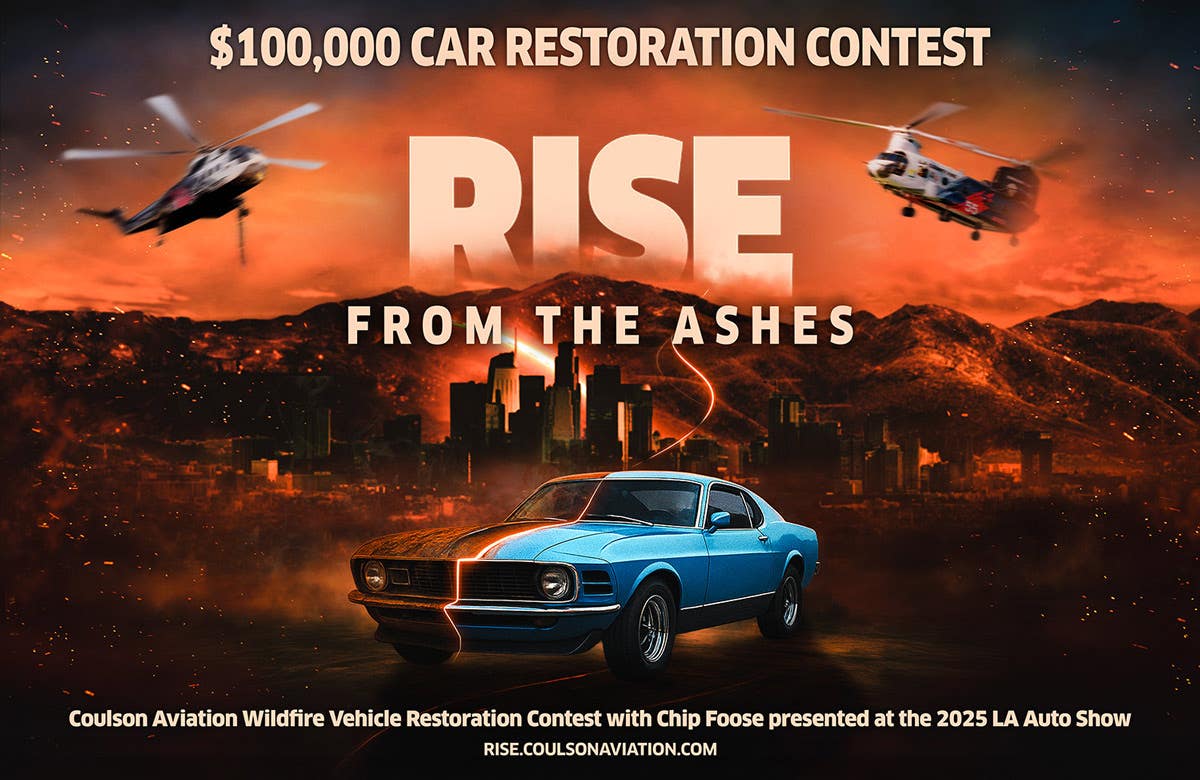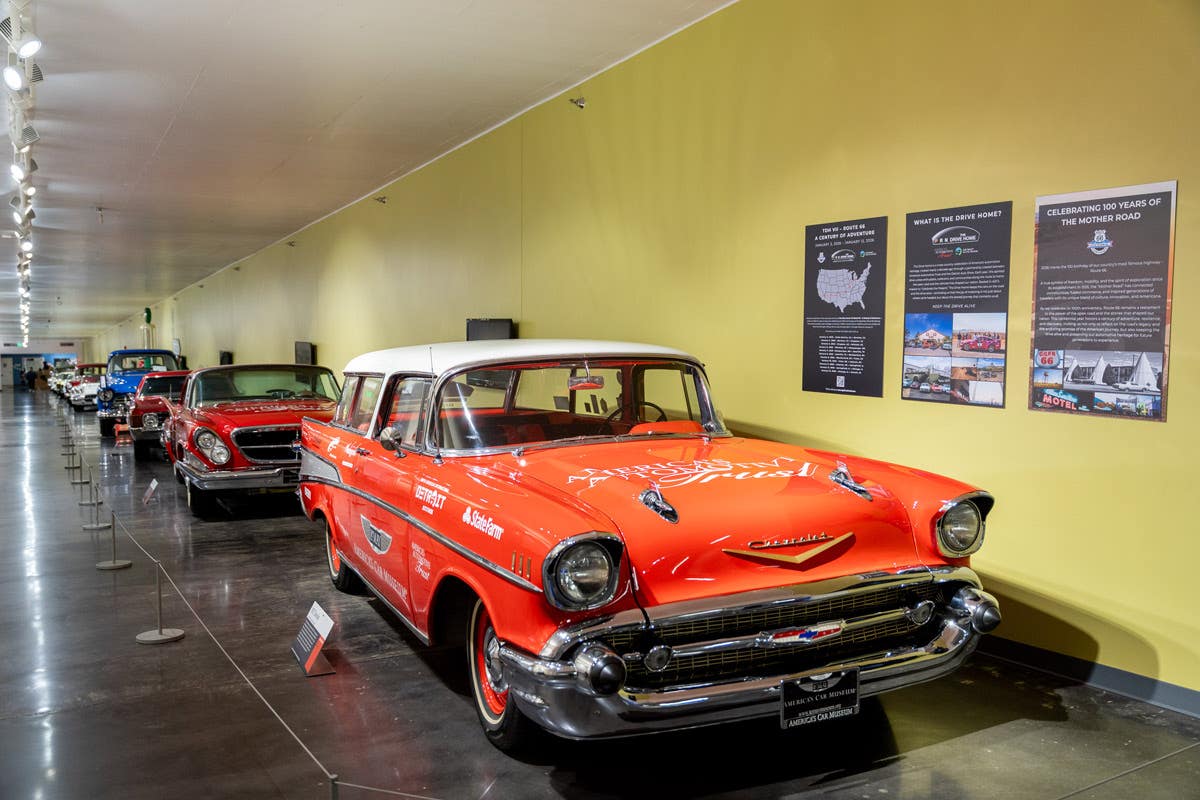In every period of the automotive age, there have been great-looking cars. But cars that can quicken the pulse even before the key goes in the ignition have appeared more often in some eras than in others.
Although all hobbyists can admire elegant or racy automotive horseflesh from the 1920s-'40s, the sea of change in automotive design really happened in the 1950s. Even the everyday family car went from being a tall, sober functional people-carrying steel container on wheels to a fast, colorful, glassy, low-slung and aviation-inspired dream machine. Clark Kent became Superman.
Automotive stylists learned how to do creative things with paint, metal and glass that had never been done before. Their exuberant designs matched the more powerful engines inside, and both reflected the optimism and prosperity of the Eisenhower era. Whereas in the '30s or '40s, it might have taken a discerning eye to tell a Chevy from a Ford or a Plymouth ' or one year's model from the next's, by 1959, competing makes and annual model changes became so outwardly distinctive that the task was a no-brainer.
But freedom can lead to excess, and the 1950s ' the awkward teenage years of automotive styling ' were hardly free from youthful indiscretions. With bloated bodies, towering tail fins, masses of chrome trim, two- and even three-tone paint schemes and windshields that wrapped in every direction, stylists gave us new excitement in our daily transportation, but occasionally pushed the design envelope to the breaking point.
A standard for good design
The 1950s showed stylists what they could do. With the 1960s came a new appreciation of what they should do. With the adolescence of creative car design now past, the 1960s saw a new maturity that produced some of the best-looking cars in the 100-year history of the industry.
The '60s may be better remembered for the New Frontier, space exploration, Vietnam, racial and campus unrest and a youthful counterculture. But those years were also arguably the high point of automotive design. They gave us an unusual number of great-looking cars, the eye appeal of which has never since been equalled.
One reason may be that the 1960s was the last decade in which manufacturers were free to design our cars without the constraints of federal safety, fuel economy and emission-control regulations. Bumpers didn't have to take bumps, hardtop roofs didn't need B-pillars for strength, "slippery" applied to road surfaces and not car bodies and good mileage was strictly optional. But since the 1960s, the center of car design has shifted from Detroit to Washington, and corporate budgets once available for design innovation were diverted to regulatory compliance.
Today, however, the unprecedented dreariness in our showrooms and car lots seems more attributable to a new generation of stylists who appear to have learned automotive design in cartoon school. City government design review boards can keep bizarre-looking buildings and visually discordant signs off our streets but are still powerless to do anything about Pontiac Azteks, Honda Elements or bloated-looking Lincoln Town Cars.
When Detroit, Tokyo and Seoul rediscover the design principles that produce smart-looking cars, they will probably do so as a result of revisiting the 1960s. De gustibus, of course, non disputandum est (there's no arguing over tastes), so all hobbyists have their own favorites from those years. But below are my personal nominations for the most exemplary designs of the golden age. My emphasis is on the everyday cars most people drove (Corvair, Falcon and the big Ford are each named twice), rather than the exotic glamour chariots. Cited for simplicity are the first-year incarnations of each new body.
1. 1960 Falcon. Ford's entry among the all-new compact cars from the "Big Three" at the dawn of the decade was the most conventional in both engineering and appearance. It was arguably also the most pleasant-looking. Competitor Valiant was European and somewhat retro in appearance, and Corvair low-slung and too ultra-modern for some.
2. 1960 Corvair. Forty-seven years ago, who was going to put an air-cooled rear-mounted "pancake" aluminum engine and four-wheel independent suspension in an ordinary-looking body? Not Chevrolet in its first of many technically innovative small cars.
The Corvair was the antithesis of the cars of the decade just past, being very small and ultra-simple in appearance, yet even more futuristic-looking than any previous Chevy. You won't find a single superfluous line or trim element on this baby. It was architect Mies van del Rohe's "Less Is More" on wheels.
3. 1960 Ford. While Plymouth's styling went wild in 1957 and Chevy's even wilder in 1959, Ford had remained the conservative choice. That changed dramatically in 1960 when Ford finally caught up with a body that would outshine the facelifted Chevy and the new-but-visually-familiar unit-body Plymouths.
The Ford had super-simple lines resembling the new Falcon's, a low belt line with a new non-wraparound windshield, acres of other glass and tidy horizontal fins. The wide grille with inset dual headlamps was even snazzier than the dazzler on Ford's '59. And for one year only, the big Ford even abandoned its signature single large round taillamps. Yet, unlike the Chevy and Plymouth, the new Ford was conservative and tasteful while still being bolder and more contemporary than Ford had ever been before.
But it was still too daring, perhaps, to be a Ford. The look was toned down the very next year in favor of what the 1961's ads called the "Classic Ford Look."
4. 1961 Thunderbird. For my money, this was the cleanest, most elegant T-Bird ever made. A space-age dream car without extravagant tail fins.
5. 1961 Lincoln Continental. A clean break with the somewhat overdone big Lincolns of the late '50s and more modern than its two-door predecessor. Contrasting with its contemporary look was a revival of rear suicide doors and the four-door convertible. Classically simple in design, no previous or subsequent Lincoln has ever been its equal visually.
6. 1961 Olds 88. All the full-size GM bodies were new and slenderized for '61, and all were handsome. The versions that came off best, in my judgment, were the Oldsmobile "fashion line design," which was followed by the return of the split-grille Pontiac.
7. 1962 Plymouth. Leading the low-priced-three competition into the longer-lower-wider tail-fin era in 1957, Plymouth did a 180 in 1962. It debuted a downsized body with "Forward Flair" European styling and a pleasingly integrated body and greenhouse. This insufficiently appreciated styling breakthrough took some cues from Chrysler's latest all-new design ' the 1960 Valiant ' but executed them with more finesse.
The car, which won an award from the National Society of Interior Designers, was a sexy standout alongside the rather dowdy '62 Chevy and Ford ' a Jennifer Lopez flanked by Roseanne and Rosie O'Donnell. The sleek wagon was a particularly handsome model. But sales tend to favor less radical-looking cars. So as with many daring first-year designs, Plymouth was facelifted into a still-attractive but much more conventional-looking car the following year.
ronically, the Dodge version of the same 1962 body was one of the decade's most bizarre-looking cars.
8. 1963 Sting Ray. A snappy look even for Corvette, especially the split-rear-window fastback coupe. A head-turner even today.
9. 1963 Rambler Classic. The first Rambler that didn't look like a Rambler. The Motor Trend Car of the Year was, at last, the styling equal of the competition, sporting a sleek new body, lower belt line, curved door glass and concave grille.
10. 1964 Rambler American. The very next year, the littlest Rambler made it two for two for AMC . Redesigned along the lines of its big brother, the new lines worked even better on the smaller car, especially with its ultra-clean front end with single headlamps. This last Rambler American body was given minor facelifts until replaced by a smaller-but-even-better-looking Hornet in 1970.
11. 1964 Buick Riviera. One of the earliest cars in the personal luxury category, the Riv proved that Detroit could create beautiful bodies without depleting the nation's store of chromium.
12. 1965 Chevrolet. After a fresh '61 model, the full-size Chevy went through a series of dreary annual changes until getting a curvy all-new body in '65, highlighted by a striking semi-fastback two-door hardtop. One of the handsomest big Chevys ever, it faced all-new Fords and Plymouths the same year. Given a blander appearance for '66, the body was revitalized with the sharp-looking 1967 models.
13. 1965 Ford. Pulchritude was the rule among full-size cars of the low-priced three in '65, but for my money, Ford had the edge. A crisp rectilinear look gave it the appearance of a much more expensive car. Ads boasted it had tested quieter than a Rolls-Royce, and the sheer elegance of the car's appearance made the comparison seem a bit less outrageous.
14. 1965 Corvair. A stunning redesign of the ill-fated car retired before its time by Ralph Nader's book and Lee Iacocca's Mustang. All closed cars were now pillarless hardtops, and all models were pieces of masterful automotive sculpture.
The second-generation Corvair gets my vote as one of the best-looking cars of all time. A Chevy ad boasted that the editor of Car and Driver had named it "the second most beautifully styled car in the world." Second?
15. 1966 Falcon. All the Detroit compacts gained girth and weight as the '60s progressed, but I think Ford pulled it off a little better. Its popular Falcon became bigger, brawnier-looking and more Mustang-like in appearance this year. In contrast to the car's original economy image, ads touted it as a "short limousine."
16. 1966 Toronado. Innovative front-drive engineering accompanied by a breakthrough not-your-father's-Oldsmobile appearance. Over many redesigns ' some of them awful ' in its subsequent history, this Olds never looked as good as when it was the 1966 Motor Trend Car of the Year.
17. 1967 Cougar. Inheriting the Mustang body, Mercury managed to make a very different-looking car, adding elegance to the Ford's sportiness. Another Motor Trend Car of the Year winner.
Some might add its progenitor, the 1964-1/2 Mustang, to my list. It was the most famous and most successful car of the 1960s, and, unlike the Cougar and many others on my list, it's still being made. Mustang created the pony car category and popularized the long-hood, short-deck look. And it received the Tiffany Award for Excellence in American Design.
Though you can't argue with success, for me, the look was too conservative ' even prim ' for a sporty car until its first facelift in 1967. But Lee Iacocca was no fool, and that paradox probably accounted in good part for the Mustang's chart-busting popularity. The car wasn't so aggressive-looking that it couldn't be sold to the women, middle-aged businessmen, schoolteachers or even accountants pictured as potential "Mustangers" in Ford's advertising. My stock broker father drove a navy blue one in his 50s. Because of good resale value, it was a good investment. At least, that's the reason he gave me.
Nonetheless, market success doesn't figure in my personal criteria for superior design. Indeed, many super-looking cars have been outsold by less imaginatively styled competitors. So in my book, Cougar simply did a better job with sporty luxury than the original Mustang did with sporty sportiness.
18. 1969 Chrysler Corp. Clean "fuselage" styling and curved side window glass made the last of the '60s full-size cars from Chrysler sleek-looking despite their enormous dimensions. The look worked even better when it spread to the intermediate Plymouth Satellite and Dodge Coronet/Charger in 1971. But that's another decade and another story.








